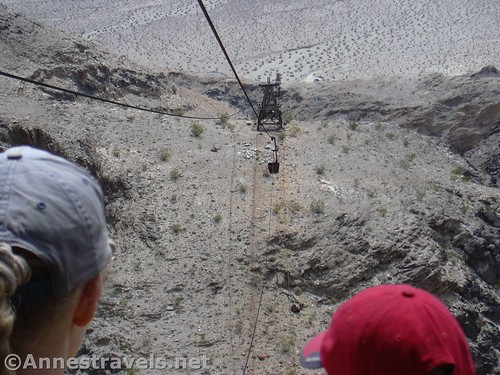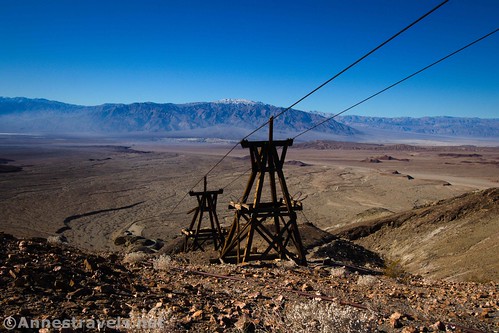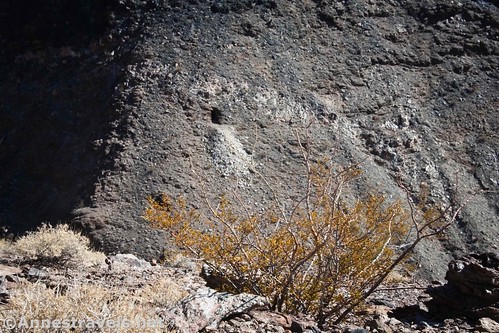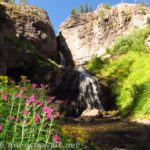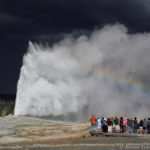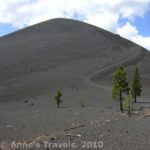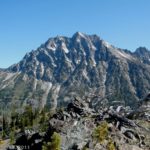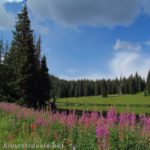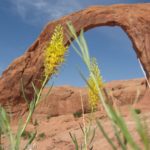Last fall, I went to Death Valley National Park. One of the “must do” hikes on my list was up to the Keane Wonder Mine. It’s not that we’ve never done it before – I’d say we were in the ballpark of having hiked up there three times before – but I wanted to explore it again now that it had been “cleaned up” a bit. In 2008, the park service closed the area to sure up some of the crumbling infrastructure and remove some of the hazardous chemicals that had been used in the mining operations. It had reopened in 2017, but I hadn’t yet had a chance to see what it looked like since reopening. (Answer: Pretty much the same as before.)
But there was more to my desire to hike the trail than just to see what the National Park Service had done to it. Amongst other writing assignments, I’d been doing deep research into the history of the Keane Wonder Mine. Specifically, I’d been reading about the people who had owned the mine, from the hot-tempered Irish immigrant who had first discovered the gold vein to the millionaires who had funded the development of the mine. Along the way, I learned some of the famous and infamous history of the operation of the mine, from broken tramways to the fact that an ice factory had once been built on the site.
So when I finally hiked up along the Keane Wonder Aerial Tramway on our final week in Death Valley, I wasn’t just visiting an old mining area. I was visiting the place where Jack Keane and his friend Domingo had gone prospecting; the place where a Dutch-orphan-turned-submarine-captain-turned-millionaire had thought to make another fortune; the mine where the gold was so rich that the bank manager had tried to foreclose on a debt (that even the courts couldn’t figure out whether or not existed); the area where an old prospector (whose own mill was a short distance north) had told tales to visitors around the campfire…
Keane Wonder came alive to me because I knew its history. I might not have memorized how many tons of gold had been extracted, but I knew about the people and the crazy history surrounding the mine’s operation.

As we read the Bible, we find some great stories of what God has done. But unless we’ve experienced God and His work in our daily lives, we’re just reading powerful tales. They’re interesting, even exciting at times, but they have very little relevance to our lives here and now.

When we’ve seen God move in our own lives, the stories of the Bible come alive to us. Instead of just being a tale of how a powerful event happened to, say, King David, the story is alive because we’ve seen God slay giants in our own lives. Like Peter, we’ve known the thought of, “Go away from me, for I am a sinful man, O Lord!” (Luke 5:8) or, “Lord, to whom shall we go? You have the words of eternal life” (John 6:68). Joseph seems a little too close to home if we are having family relational conflict. Abraham, Manoah, Hannah, and Elizabeth all become more real when we’ve seen God give children to barren couples.

The opposite is also true: When we read the stories of the Bible and then see it in our lives, our lives light up with the realization that this has happened before and we can see where this is going. I’ve personally seen parallels with stories like Saul and David, Nicodemus at night, and righteous Lot, among other stories. At times the parallels have been beautiful; other times, it’s been downright scary and fodder for plenty of prayers.
It pays off to do research on historical sites before we visit – they are less random and visiting has more significance to us. It also pays off to know the Bible in relation to our daily lives. Whether we find a parallel, not only does the story become more real and significant to us – less random – but it also draws us closer to the One Who made the story happen and is working in our lives in the here and now.


